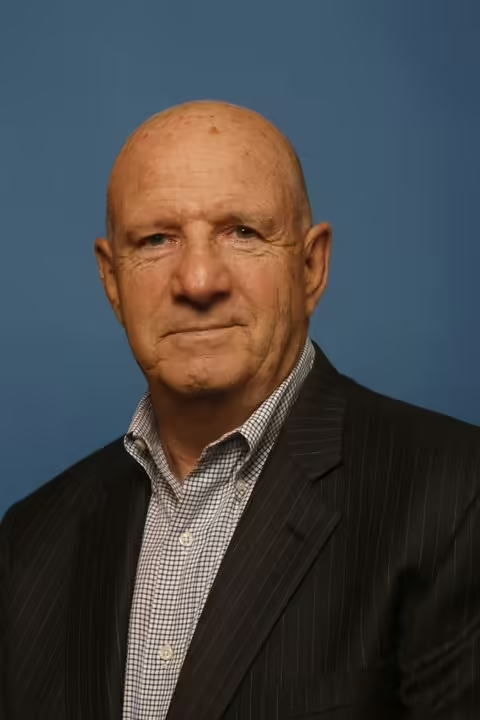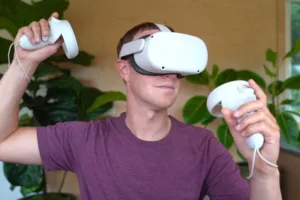Elon Musk, Mark Zuckerberg, Sam Altman and Bill Gates are among the industry giants backing radical new technologies designed to replace the smartphone. These tech leaders are investing in future-forward alternatives such as brain-machine interfaces, augmented reality wearables and even skin-mounted digital tattoos—all in pursuit of more seamless, intuitive interaction with machines. At stake is the entire display industry, along with a redefinition of what it means to be digitally connected.
Elon Musk’s Neuralink uses brain-computer interfaces. Neuralink envisions a future where thoughts and perhaps vision directly control digital functions, bypassing the need for physical input. With two human subjects already implanted, Neuralink’s research underscores a profound possibility: typing, clicking or speaking could all become obsolete. In Musk’s world, mental intention alone could operate everything from sending a message to launching a drone.
Bill Gates supports Chaotic Moon, a Texas-based startup building “electronic tattoos.” These tattoos, embedded with nanosensors and worn on the skin, can monitor health metrics, track location or even facilitate digital communication. By transforming the human body into a data interface, they hint at a world where our skin becomes the screen and sensor.
Mark Zuckerberg is using Meta to turn AR into the primary computing platform by the end of this decade. With AR glasses, users see real-time data, notifications and communication overlays projected directly onto their visual environment. It’s a step beyond traditional interfaces—blending physical and digital realities. Zuckerberg’s vision is deeply connected to Meta’s broader metaverse ambitions, where immersive technology fosters new forms of presence and interaction.
Sam Altman and his new $5 billion partner, Sir Jony Ive, are developing seamless and ambient computing powered by AI. While less hardware-focused than his peers, Altman’s OpenAI ecosystem could serve as the cognitive engine that powers these new devices.
Apple, with the most at stake, is following a dual strategy by doubling down on its flagship product, reaffirming its belief in the iPhone as the centerpiece of modern life. Rather than leap into futuristic hardware, Apple is following a path of incremental innovation by releasing the Vision Pro—a technical marvel with market shortcomings—and soon taking a shot at smart glasses, an initiative pioneered by Meta.
The divergence reflects a lack of consensus on how humanity will interact with technology. Lacking a smartphone presence gives some companies the freedom to envision technology disappearing into the background, becoming part of our bodies or blending seamlessly into our surroundings. These ideas challenge fundamental notions of privacy, control and consent while promising unprecedented levels of efficiency and connectivity.
Apple and Samsung advocate a human-centered model where people retain physical control over their technology through the smartphone rather than replacing it, betting that it will take society much longer than these leaders believe to embrace invasive and disruptive features. Society has benefited as the computing world transitioned from punched cards to mainframes, to minicomputers, to PCs and now smartphones. These proposed innovations would create new levels of interaction with digital devices, from more sophisticated use of the mouth, eyes and ears to the embedding of sensors, processors and memory in our brains, raising the question of where—or if—a display fits.
Replacing smartphones with devices that use AI inquiries in our daily activities would create a massive increase in power consumption, which was 29,471 terawatt-hours in 2023. People would use devices such as Chaotic Moon, Neuralink or Meta’s AR glasses to enhance every thought with an AI inquiry. Today, it takes 0.3Wh to process a ChatGPT request. If the installed base of 4 billion smartphones were replaced by these devices, and the power consumption per inquiry dropped by half and were used eight hours per day, 10 times per hour, it would add 60% to today’s power usage. Such a burden would be unsustainable under the current power generation model.

Barry Young has been a notable presence in the display world since 1997, when he helped grow DisplaySearch, a research firm that quickly became the go-to source for display market information. As one of the most influential analysts in the flat-panel display industry, Barry continued his impact after the NPD Group acquired DisplaySearch in 2005. He is the managing director of the OLED Association (OLED-A), an industry organization that aims to promote, market, and accelerate the development of OLED technology and products.

